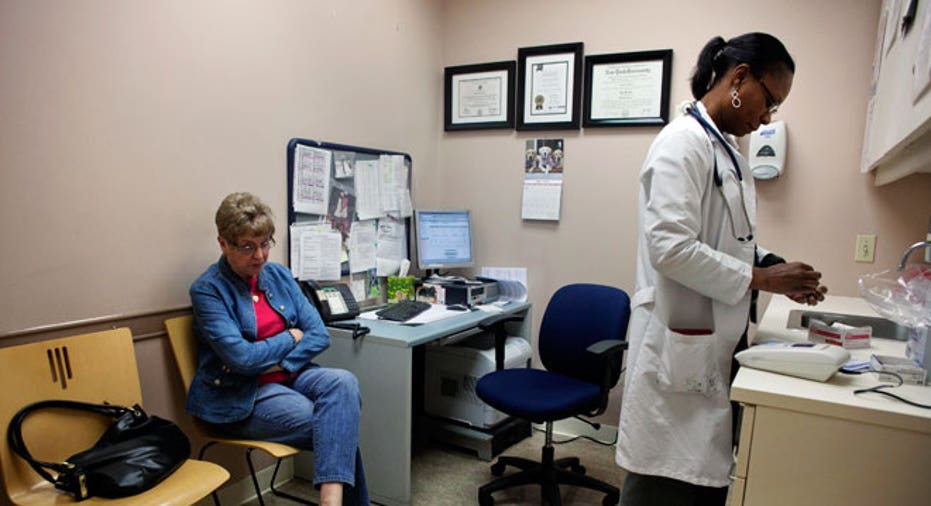How to Choose a Primary Care Physician

Turns out, consumers may well spend more time researching the purchase of a car or a refrigerator than they do making choices surrounding whom they will trust with their care.
“The important point: Consumers don’t do sufficient research,”says Dr. David Nash, dean of Philadelphia’s Jefferson School of Population Health. “The real story in a market-driven health care model is how do I choose where and to whom I should go?”
Things definitely need to change, experts warn. As a result of the retailization of health care and the evolution of consumer-driven plans, consumer engagement in one’s own care becomes paramount, says Nash.
Online resources may be readily and plentifully available, but they are not policed, accredited or evaluated and not at all sufficient on their own to help consumers make provider decisions. Nash says proper research requires making an appointment to interview a prospective physician. Soft skills, what used to be called a professional’s bedside manner, can be assessed by that visit. “If a practice doesn’t allow that interview, it’s not a practice in which you want to be a patient.”
Beside the personal chemistry, Nash ticks off a list of questions to ask during the visit: Did the doctor train in the U.S. or elsewhere? Where did he/she complete medical school residency and internship? Is he/she board certified?
It’s also important to assess the office environment during your visit. Does the doctor or nurse practitioner email patients? Is there a way to connect with the practice online? Is the practice a patient-centered medical home, an organized system of care that results in better outcomes, or more checks-and-balances and increased focus on evidence-based practice? Nash recommends asking these questions to evaluate potential doctors.
“Selfishly, as a patient I want all those criteria—and in the future, having online access to my own medical record,” he says.
“What’s more, if I call on a Tuesday with a 102-degree fever and feel like I’m going to die, will the doctor see me that afternoon and or the next morning, or send me to the emergency room—which is a huge red flag.”
You want Compassion and Competence
Compassion and competence top the list when choosing a PCP, says Dr. Richard Colgan, professor of family and community medicine at University of Maryland School of Medicine in Baltimore.
“I’ve met physicians who hold the highest degrees and credentials and leave the patient wanting for more,” Colgan says. “There is an art as well as science to medicine”
The very best doctors are the ones who consider the whole patient—“not just a 50-year old male with diabetes or a 20-year old female with anxiety and alcohol abuse.”
The well-prepared patient is one who’s done some homework on the Internet, heeded the word-of-mouth recommendations from trusted family, friends and colleagues, and used a few office visits to “test” whether the PCP’s personality and style mesh with his/her needs. “Coming in for one or two visits does not have to constitute a long-term relationship,” says Colgan. “It makes sense to invest some time in getting to know your doctor, to see if this physician-patient relationship is right for you."
Matching Your Needs With Your Physician’s Practice Model
The most important consideration when looking for a physician is access, says Andrew Diamond, an internist at One Medical Group in San Francisco. “You may have the best doctor in the world, but if he or she can’t see you for six months, the relationship is not useful to you.”
Researching information on the web is admittedly challenging, says Diamond. Personal websites can help you identify a PCP’s specialty—in primary care, either internal or family medicine. While not “typical specialists,” their focus should align with your needs. For example, a woman in her post-menopausal years would not want to see a PCP whose expertise is adolescents.
While skeptical of physician-rating sites, Diamond says “in aggregate,” they have some value. Eighty reviews reporting strong people skills or, conversely, a recurrent only two stars show consistencies signaling strengths or weaknesses.
Ask this Question
Inquiring about a physician’s income formula gives the best indication of how a practice is run, according to Steve Rallison, administrator of Portland, Oregon’s GreenField Health, which uses a subscription model membership in which patients pay a modest $12-to-$65 monthly fee depending on how many family members use the practice to cover services which are not offered by health plans.
The question is dicey, but fair game during a “meet-and-greet” appointment, he says. Is a physician driven by what he/she has to do or wants to do?
If a PCP has to generate revenue by hitting a certain number of visits each day, even the best-hearted physician may hit the wall when it comes to cultivating the all important physician-patient relationship, says Rallison.
Don’t Neglect Nurse Practitioners
“We live in context,” says Kathleen Potempa, a registered nurse and professor and dean of the University of Michigan School of Nursing, who champions choosing a nurse practitioner to manage one’s primary care. Potempa eschews the term mid-level professionals, as nurse practitioners are sometimes called—a misnomer she says that is not only far from the truth but one that has also promoted “fear fantasies.”
Because of their excellent medical and psycho-social training, nurse practitioners listen and communicate well to really understand the context of a person’s life and zero in on how tension and problems can cause illness. They look beyond a patient’s chief complaint to uncover solutions that help patients manage their illness or condition—and, to a great extent, to stay healthy longer, Potempa says.
Nurse practitioners effectively work with physicians and are very good at recognizing when acute medical situations warrant additional intervention and choosing those other providers to step in, she claims.



















